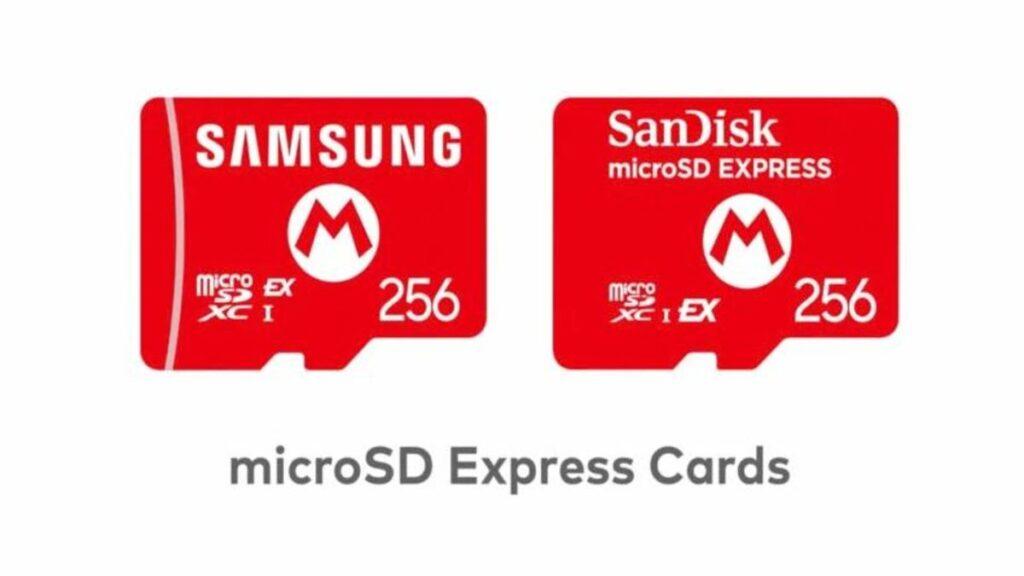For approximately two decades, traditional microSD cards were the storage solution chosen for portable devices such as mobile phones and portable consoles.
However, the evolution of storage solutions has led to the development of MicroSD Express, an advance on its predecessor.
While MicroSD and MicroSD Express cards seem equal, their specifications and applications differ. Maybe he wonders why he has not heard of MicroSD Express, it is because technology is not only relatively new, but its adoption has been quite slow.
MicroSD Express VS MicroSD card: the basics
MicroSD Express is an advanced MicroSD version that uses PCIE and NVME interfaces similar to high -end SSD storage solutions to achieve significantly faster transfer speeds of up to 985 MB/s.
This storage format was first launched by the SD association in 2019, and since then, several brands have developed cards with minimum guaranteed speeds of 150 MB/s, 300 MB/s, 450 MB/SO 600 MB/S, as indicated by the “E” symbol on the card label. However, these cards have not seen a wide use until recently, when Nintendo announced plans to use them for storage expanded on the next Switch 2.
On the other hand, a MicroSD card is a small removable storage device that has been widely used on smartphones, tablets, cameras and game consoles. Originally launched in 2005, the format has become SDHC, SDXC and SDUC variants, with capabilities of up to 2TB.
These cards use the SD interface and are classified according to speed. Most consumption devices today support UHS-I cards, with reading speeds up to 100 MB/s. UHS-II and UHS-III cards less common can reach speeds of up to 300 MB/SY 600 MB/S, respectively.
Speed and performance
The obvious advantage of MicroSD Express over microSD is the transfer speed. Its interfaces enable faster writing speeds, allowing a perfect recording and faster file transfers. Another key benefit is reduced latency, thanks to NVME technology.
Unlike traditional microSD cards, which depend on older interfaces, MicroSD Express offers lower response times when accessing data. This leads to a faster system response capacity, especially when large files are opened, execute applications or change between stored media.
Reason compatibility concerns
A great inconvenience of MicroSD Express is its lack of complete compatibility back. If you use a MicroSD Express card on an older device with a traditional microSD slot, the transfer speed falls to the UHS-I levels, which can be disappointing. In addition, devices made for MicroSD Express are exclusive, which means that regular microSD cards will not work in them.
This compatibility problem is clear with the Nintendo Switch 2, which only admits MicroSD Express cards. Users now need to buy new storage solutions, even if they have many previous microSD cards of previous switching models. This change has caused frustration among users who expected backward compatibility.
Use and adoption cases
MicroSD Express cards are not designed for all cases of use. If you mainly store regular photos and videos on mobile phones or cameras, a standard microSD card will work well.
MicroSD Express shines in scenarios where the transfer of high -speed data is critical, and a key example is games.
The games are intensive in data, and the fastest reading/writing speeds reduce load times, improve performance and make the game softer. This is probably a key reason why Nintendo Switch 2 adopted MicroSD Express.
Standard microSD cards often fight with large files, which leads to fallen frames or slow transfers when dealing with high data rates, such as the 4K U 8K video. This makes MicroSD Express especially valuable for filmmakers and content creators.
Cost and availability
Said all this, getting a MicroSD Express card is not easy. Few brands are currently produced, and availability may be limited in some regions.
In addition, because technology is still developing and uses more advanced components, MicroSD Express cards tend to be more expensive. For example, a Lexar 1 TB microSD card costs around $ 200, while a 1 TB standard card of the same brand has a price of less than $ 70.
Should MicroSD Express update?
If changing MicroSD Express depends on your needs and compatibility with the device. If your device requires it, as the Nintendo Switch 2, then the update is necessary. But if your device only supports standard microSD cards, there is little benefit, since speeds will decrease by almost 90%. That said, if low latency is a priority, it may be worth considering.
For general users who want affordable storage for smartphones, cameras or other devices, traditional microSD cards remain a practical option. Professionals who work with high -speed applications can find that MicroSD Express is an investment that is worth it.
FUTURE OF MICROSD EXPRESS
Portable computer devices, including laptops, tablets and PC for portable games, now use high -grade hardware already often depend on expandable storage for larger applications and media. For example, some mobile phones and cameras can now record in 8K, which exerts a lot of pressure on storage performance.
An 8K video video can be as large as 20 GB. Saving this on a normal microSD card could take about four minutes, while a MicroSD Express card could do it in about 30 seconds. That is a significant difference that could promote the adoption of MicroSD Express.
Even so, the future of MicroSD Express really depends on how many device manufacturers choose to admit it. If more consoles, cameras and portable devices integrate the format, prices can lower and the market could expand.




